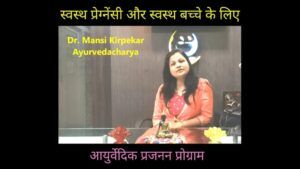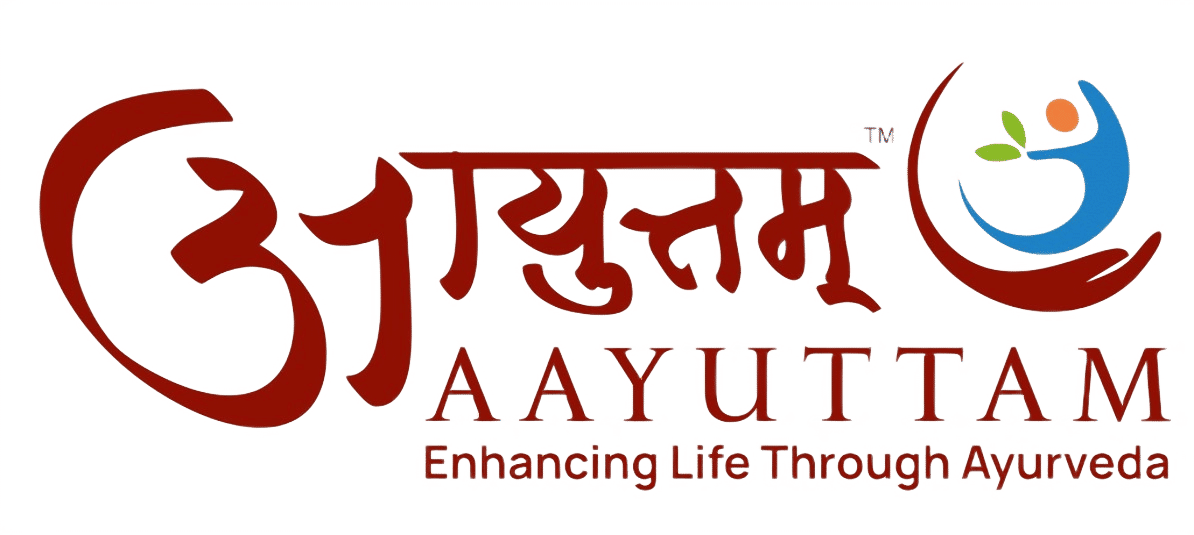
Prajanan प्रजनन -हेल्दी प्रेगनेंसी, हेल्दी बेबी , हेल्थी मदरहूड के लिए पंचकर्म
Listen the Story आज का विषय है हेल्दी प्रेगनेंसी, हेल्दी बेबी , हेल्थी मदरहूड। हेल्दी प्रेगनेंसी, हेल्दी बेबी , हेल्थी
Holds a degree of Bachelor of Ayurvedic Medicine and Surgery (B.A.M.S) from Aryangla College, the oldest Ayurvedic medical institution in India, located in Satara, Maharashtra.
Earned a Master of Arts in Sanskrit from Tilak Vidyapeeth in Poona.
Certified in Panchakarma Chikitsa by AYUSH.
Specializes in Panchabhautik Chikitsa, a distinct branch of Ayurveda.
Holds a certificate in Yoga from Yog Vidya Niketan, Santacruz.
Actively involved in the Panchabhautik Ayurveda Forum, participating as a delegate, organizing member, and speaker at numerous national and international conferences.

Greetings from Aayuttam Ayurveda Blog.
In our previous blog, we delved into the concept of Panchakarma, exploring its various types, including Vaman and Virechan in great detail. Today, we embark on a journey to understand Basti Chikitsa.
Commonly perceived as a treatment solely focused on bowel cleansing, Basti holds a much deeper significance in Ayurveda. It is not merely a therapy for clearing the bowels, but rather a profound science with far-reaching therapeutic benefits.
Good day, everyone. In today’s blog, we will delve into the scientific principles underlying BASTI CHIKITSA, an integral part of Ayurvedic medicine.
In Ayurveda, BASTI CHIKITSA holds a prominent position, often referred to as “half treatment.” This signifies that, in many cases, BASTI CHIKITSA alone can effectively address up to 50% of a patient’s health concerns. However, for comprehensive healing, it is often combined with other therapeutic modalities, such as medication, dietary modifications, and exercise, to achieve optimal results.
The profound significance accorded to BASTI CHIKITSA underscores its potential in promoting overall well-being and addressing various health conditions.
Before delving into the scientific principles underlying the basti treatment, it is essential to gain an overview of our digestive system.
Upon consumption, the digestion of food commences in the oral cavity. As it progresses downward into the stomach, it undergoes amalgamation with various gastric fluids and hepatic enzymes. The primary function of nutrient absorption from ingested sustenance occurs within the intestinal tract, encompassing both the large and small intestines. Subsequently, the absorbed nutrients, in conjunction with the bloodstream, are distributed throughout the entire body, thereby nourishing it.
The key point to note is that absorption occurs in the intestine. This principle was utilized by our ancient sages in developing the Basti Chikitsa.
Food requires a three-hour digestion process to be converted into a form that the body can absorb nutrients from. However, medicine does not require a 3-hour digestion process to be absorbed into the bloodstream. Therefore, in order to bypass this 3-hour process and reach the intestine directly, our sages formulated Basti Chikitsa.
In ancient times, kadhas and ghee-based medicines were administered directly into the large intestine using a BASTI YANTRA, allowing for rapid absorption into the bloodstream. This innovative approach to emergency medical treatment, known as BASTI chikitsa, held great significance.
The scientific principles underlying basti treatment are truly remarkable. Our revered sages deserve our utmost respect for pioneering such a novel and effective emergency treatment modality in those times.
All Panchakarmas and medicine of Ayurveda are backed by scientific principles. These principles are known as Siddhants.
Siddhant is derived from the words Siddha and Anth. Siddha means something that is proven, while Anth means the end. Therefore, Siddhant refers to a truth that has been proven and is considered unchangeable. The Siddhants expounded in Ayurveda are unique and represent the fundamental truths of life.
If we fail to comprehend these Siddhants, it may be due to insufficient effort in seeking detailed information, inadequate study, or a lack of intellectual capacity to grasp the concepts. However, it is erroneous to dismiss Ayurveda as unscientific. Instead, we should diligently study, investigate, and learn the science behind Ayurveda to gain a deeper understanding of its principles.
Ayurveda is a time-tested science that remains relevant and effective to this day. It is imperative that we pay due respect to Ayurveda and embark on a journey of learning and understanding its principles. I am humbly contributing my efforts to promote Ayurveda by elucidating the scientific basis behind its practices. I encourage you to join me in this endeavor.
In our upcoming blog post, we will delve into the intricacies of basti karma, exploring its various types and the associated benefits.
I invite you to follow our blog, “Treasures of Ayurveda,” for insightful and informative content on this ancient healing system.
Wishing you continued health and well-being.
Thank you for your attention.

Listen the Story आज का विषय है हेल्दी प्रेगनेंसी, हेल्दी बेबी , हेल्थी मदरहूड। हेल्दी प्रेगनेंसी, हेल्दी बेबी , हेल्थी

नमस्कार पिछले ब्लॉग मे हमने पंचकर्म, उसके प्रकार वमन और विरेचन कर्म इनके बारे में अधिक जानकारी ली थी |

Greetings from Aayuttam Ayurveda Blog. In our previous blog, we delved into the concept of Panchakarma, exploring its various types,
Discover the healing power of Ayurveda with our expert care. Request a call back today to start your personalized wellness journey.

D 201, Shanti Dwaar Building, Shantivan,
Near Sanjay Gandhi National Park,
Borivali-East, Mumbai- 400066